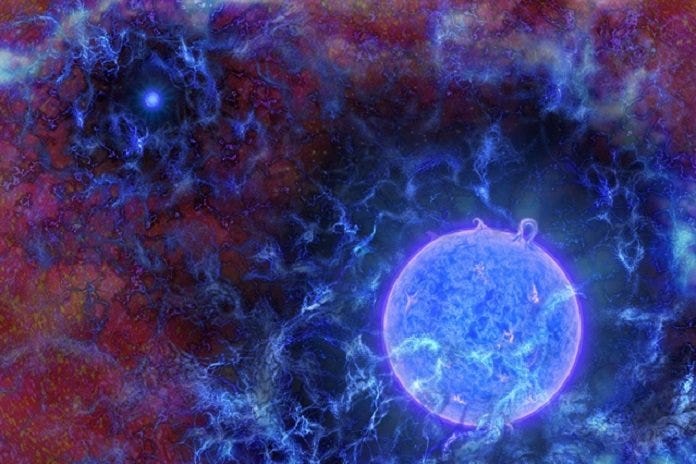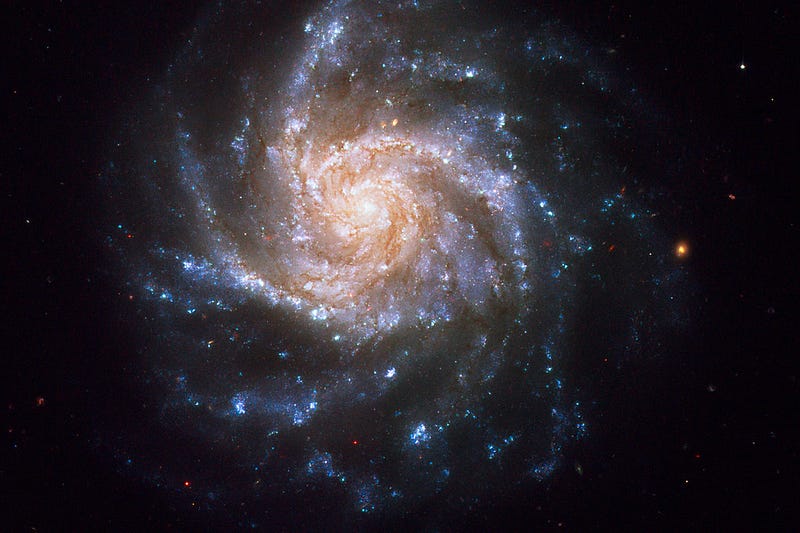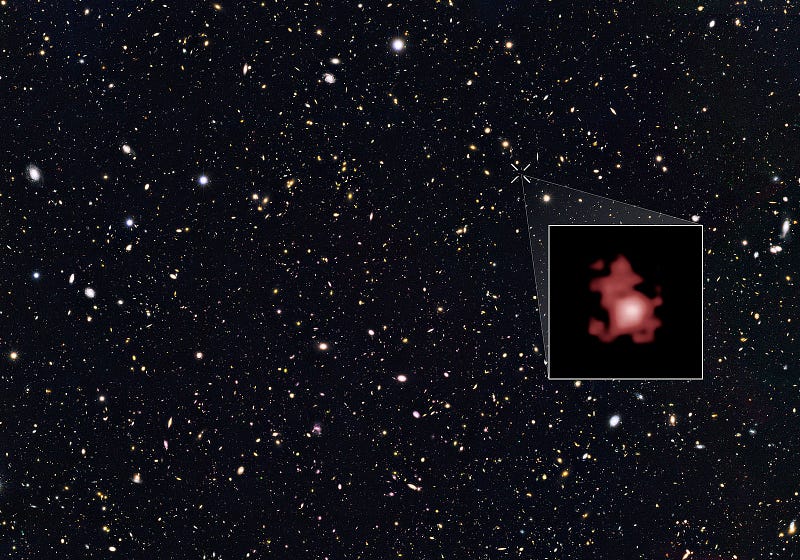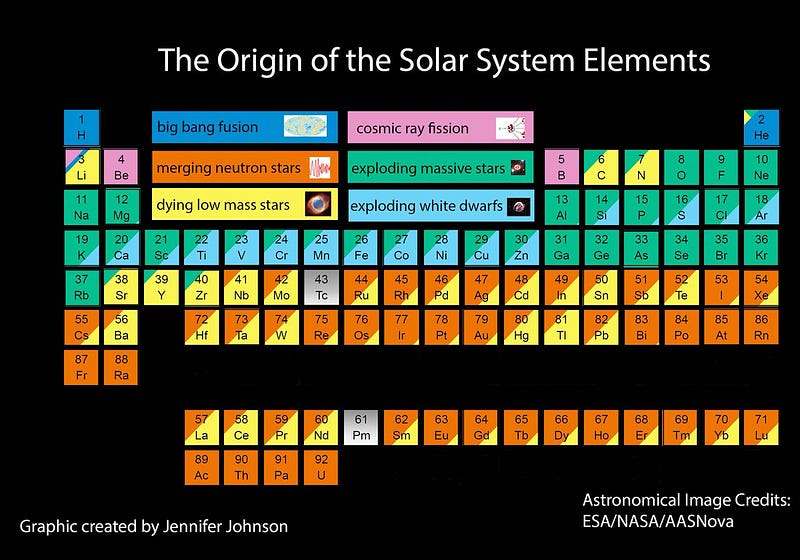Exploring the Birth of the Universe's First Stars
Written on
Chapter 1: The Origins of Stars
The Genesis of Stars from Cosmic Shadows
Stars typically originate in the frigid gas clouds of the interstellar medium, which consist primarily of dense hydrogen. This element, being the most abundant and simplest in the universe, plays a crucial role in star formation. In extremely cold regions where hydrogen is plentiful, the density becomes significant enough for gravitational collapse to occur. As irregularities arise, the denser core begins to accelerate, conserving angular momentum much like a figure skater pulling in their arms to spin faster. This increased speed raises the core's temperature until it reaches the threshold for nuclear fusion, giving birth to a star. The outward pressure from these core reactions counteracts the inward pull of gravity, allowing the star to shine in equilibrium.
For a star to form, a gaseous nebula must undergo collapse.
So collapse.
Crumble.
This isn't your end.
This is your beginning.
Zoe Skylar
But how did the very first stars emerge when nebulas and galaxies were nonexistent, and the universe had not yet cooled sufficiently to support the current cold conditions of stellar nurseries?
Elements in the Early Universe and the Unknown
Approximately 74-75% of the baryonic mass in the universe is hydrogen, while 23-25% is helium, the second simplest atomic element. The remaining elements, which constitute what we encounter in everyday life, make up less than 2% of the baryonic mass. This stark contrast shifts the 80-20 rule to 98-2, where 98% of what appears significant to us comprises merely 2% of the known matter in the universe.
I emphasize “baryonic” mass and “known” matter because there exists a dark aspect of the universe that remains elusive. We can infer its presence by measuring its mass, even though it does not interact with light—meaning it neither reflects nor absorbs light, rendering it invisible yet quantifiable. This enigmatic substance is termed dark matter.
As Neil Degrasse Tyson suggests, perhaps “dark gravity” would be a more fitting designation for this unknown entity. Although we cannot definitively categorize it as matter, we often presume it is due to its gravitational influence, which bends spacetime and draws in surrounding objects.
This gravitational potential is vital for star formation, as indicated in the earlier discussion of gravitational collapse leading to star births.
The End of the Dark Ages
Before the advent of the first stars, the universe experienced what is termed the (cosmological) dark ages—an era devoid of shining stars and galaxies. At this time, the universe was an obscured expanse. The oldest known galaxy dates back about 13.4 billion years, emerging approximately 400 million years post-Big Bang.
The process of star formation spans millions to hundreds of millions of years, suggesting that assembling a galaxy from the formation of the first star took time. Unlike a manual for parenting, the universe had no guide. Nevertheless, it is believed that the very first stars formed relatively quickly, likely being extraordinarily massive.
Before stars could emerge, the universe needed to cool. Currently, stars develop in molecular gas clouds that must be between 10-20 K for sufficient density. However, the first stars formed prior to the universe cooling to these temperatures, leading to speculation that the star-forming processes were more violent, resulting in the creation of these exceptionally large stars. One could say the early universe was a hotbed of activity, living a fast and furious existence.

Gravitational Instability
To initiate star formation, gravitational instability must occur, triggering the self-gravitating process in cold gas. Presently, these instabilities often arise from shockwaves produced by supernova explosions or the pressure shockwaves resulting from a spiral galaxy's rotation. The bluish spirals visible in such galaxies originate from stellar nurseries containing a higher proportion of massive blue stars. Thus, the blue hue signifies newborn stars formed from pressure waves traversing cold molecular clouds as galaxies rotate.

As stars age, the more massive ones have shorter lifespans due to their rapid consumption of fuel. Consequently, regions within galaxies with newly formed stars often exhibit a blue coloration. Over time, only smaller stars endure. For instance, yellow stars like our Sun have lifespans of about 10 billion years, and we are currently halfway through our Sun's lifespan. Meanwhile, smaller dwarf stars can outlive the current age of the universe.
An image of the oldest galaxy observed to date appears predominantly red, primarily due to the extreme redshift of light from such a distant object. At the time we observe it, this galaxy would have been home to luminous blue stars.

As galaxies age, they deplete their gas reserves and cease producing new stars, ultimately resulting in the dominance of red dwarfs.
The Formation of the First Stars
How did the first stars come into being without the influence of supernova shockwaves or the rotational pressure waves of galaxies? Some form of instability must have triggered this process. It may have stemmed from minor initial density fluctuations, such as random disturbances in the hydrogen gas, which was the universe's primary component. A chance disturbance could have initiated the cooling of gas, leading to the formation of a center within a dark matter-dominated gravitational potential well, akin to a primordial molecular cloud.
It is theorized that the first stars formed rapidly and were immensely massive—around 100 solar masses. Such a massive star would have a brief lifespan, potentially only a few million years, yet it would leave a profound impact through its violent supernova explosion, generating shockwaves that would propagate through space and facilitate the creation of new stars. With the emergence of these initial stars, the dark ages concluded, paving the way for a universe filled with stars and galaxies.
How Stars Shaped the Universe—and Us
Initially, only hydrogen, helium, and trace amounts of lithium existed. However, in the cores of the first colossal stars, heavier elements began to form. These massive stars serve as elemental factories, synthesizing heavier elements from lighter ones through fusion processes. The larger the star, the greater the mass of elements it can create, although iron (Fe) represents the limit for element creation within a star. Heavier elements are produced through various neutron-capture processes in the extreme conditions of dying stars, supernova explosions, or the mergers of compact stars.

The nucleus of the helium atom, comprising two protons and two neutrons (a total mass of 4 units), plays a crucial role in fueling fusion processes within stars. As a result, there is a higher prevalence of elements in the universe with mass numbers that are multiples of four: Carbon-12, Oxygen-16, Neon-20, and Magnesium-24, among others, with Carbon and Oxygen being the most abundant after hydrogen and helium.
Despite still being a small fraction, these elements have proven essential for organic life as we know it, having formed approximately 13.4 billion years after the ignition of the first stars. Or perhaps we have some successful ancestors hidden somewhere?
Interesting Facts About Element Formation
- No stable element exists with the atomic mass number 8; the progression skips from 4-Helium to 12-Carbon, which is produced either through a triple-alpha process involving three helium nuclei or a more complex CNO cycle that yields carbon, nitrogen, and oxygen.
- Similarly, atomic mass number 5 is absent, possibly explaining why the universe ceased producing heavier elements beyond hydrogen and helium. Without the intense cores of burning stars, the universe could not generate heavier elements, which require substantial timescales for their formation.
Chapter 2: Videos on Stellar Birth
The first video, "The First Stars in the Universe - Ask a Spaceman!" explores the formation of the universe's earliest stars and their significance in cosmic history.
The second video, "History of the Universe: When did the first stars start to shine?" delves into the timeline and conditions under which the universe's first stars emerged.